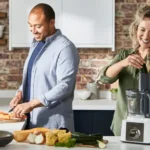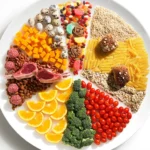Starting a food blog from scratch can seem overwhelming, but with the right strategy, tools, and mindset, it’s entirely doable. Whether you’re passionate about cooking, baking, restaurant reviews, or food photography, a food blog can become a powerful platform to share your ideas, build a brand, and even earn money.
This guide will walk you through every step, from planning and setup to content creation and promotion.
Define Your Niche
Food blogging is a crowded space. Defining a specific niche helps you stand out. Your niche is your unique angle or specialization. Here are a few examples:
| Niche Type | Examples |
|---|---|
| Cuisine-specific | Indian, Korean, Italian, Mexican |
| Diet-based | Vegan, Keto, Gluten-Free, Paleo |
| Meal type | Breakfasts, Desserts, Quick Dinners |
| Lifestyle-based | Budget Meals, Family Cooking, Meal Prep |
| Experience-focused | Restaurant Reviews, Travel + Food |
Pick a niche that you’re passionate about and one where you can consistently create high-quality content.
Choose a Blog Name and Domain
Your blog name should be memorable, relevant to your niche, and available as a domain name. Check for domain availability using tools like Namecheap or GoDaddy. Aim for a .com extension and avoid numbers or hyphens.
Tips for choosing a blog name:
- Keep it short and easy to spell
- Reflect your niche or personal brand
- Avoid trademarked terms
Set Up Your Blog Platform
Choose a Blogging Platform
For full control and monetization flexibility, WordPress.org is the best option. You’ll need to purchase hosting, but the customization options are unmatched.
Select a Hosting Provider
Reliable hosting ensures your site loads fast and stays online. Some popular hosting providers include:
| Hosting Provider | Key Features | Price Range |
|---|---|---|
| Bluehost | Beginner-friendly, free domain | $2.95 – $13.95/month |
| SiteGround | Fast servers, excellent support | $3.99 – $14.99/month |
| WP Engine | Managed WordPress hosting | $20 – $115/month |
Once you’ve selected your host, install WordPress with one click and you’re ready to go.
Design Your Blog

Choose a Theme
Pick a WordPress theme that’s clean, mobile-responsive, and optimized for SEO. Premium themes often come with more customization options and support.
Essential Plugins
Plugins extend the functionality of your site. Key plugins for food blogs:
| Plugin | Purpose |
|---|---|
| Yoast SEO | Search engine optimization |
| WP Recipe Maker | Displays recipes with rich snippets |
| Jetpack | Site security and performance |
| WP Super Cache | Improves site speed |
| Akismet | Spam protection for comments |
Create High-Quality Content
Start With Pillar Posts
Create cornerstone content that covers broad topics within your niche. These serve as reference points and generate traffic.
Content Ideas
- Recipes (with step-by-step photos)
- Ingredient spotlights
- Cooking techniques
- Product reviews
- Kitchen organization tips
- Restaurant roundups
Recipe Writing Tips
- Use clear, concise instructions
- Include prep and cook time
- Mention serving size
- Add nutritional info if possible
Photography Tips
- Use natural light
- Shoot in portrait mode for Pinterest
- Invest in a tripod and a good camera (or a high-end smartphone)
- Use editing software like Lightroom
Optimize for SEO
Search Engine Optimization (SEO) helps people find your blog on Google. Here’s how to do it right:
On-Page SEO
- Use keywords in titles, URLs, and headings
- Add alt text to images
- Write meta descriptions
- Link to related posts
Technical SEO
- Ensure your site is mobile-friendly
- Improve page loading speed
- Use HTTPS
- Submit your sitemap to Google Search Console
Keyword Research Tools
- Google Keyword Planner
- Ubersuggest
- SEMrush
- Ahrefs
Promote Your Blog
Creating great content is only half the battle. Promotion helps your blog reach a wider audience.
Social Media Platforms
| Platform | Best for |
|---|---|
| Food photography, short videos | |
| Recipe pins, infographics | |
| Sharing posts, joining groups | |
| YouTube | Cooking tutorials, vlogs |
| TikTok | Short, engaging recipe clips |
Email Marketing
Build an email list using tools like Mailchimp or ConvertKit. Offer a freebie (e.g., a recipe eBook) to encourage sign-ups.
Collaborations
Partner with other bloggers or brands for guest posts, giveaways, or co-created content.
Monetize Your Blog

Once you have steady traffic and content, it’s time to explore monetization.
Income Streams
| Revenue Source | Description |
|---|---|
| Display Ads | Use ad networks like Google AdSense or Mediavine |
| Affiliate Marketing | Recommend products and earn a commission |
| Sponsored Content | Work with brands to promote their products |
| eBooks & Courses | Sell digital products |
| Services | Offer coaching, food photography, etc. |
Track Performance
Use analytics tools to see what’s working and where to improve.
Recommended Tools
- Google Analytics: Understand visitor behavior
- Google Search Console: Track search performance
- Rank Math or Yoast: Monitor SEO metrics
Stay Consistent and Evolve
Blogging is a long-term commitment. Set a content calendar and stick to it. Learn from your analytics, experiment with new content types, and stay updated with SEO and social media trends.
Conclusion
Starting a food blog from scratch is a mix of creativity, strategy, and persistence. By defining your niche, building a strong foundation, consistently producing valuable content, and learning how to market and monetize effectively, you can create a food blog that not only showcases your passion but also grows into a sustainable brand or business.
Stick with it, stay consistent, and focus on providing real value to your readers. Over time, your blog can become a go-to destination for food lovers everywhere.







